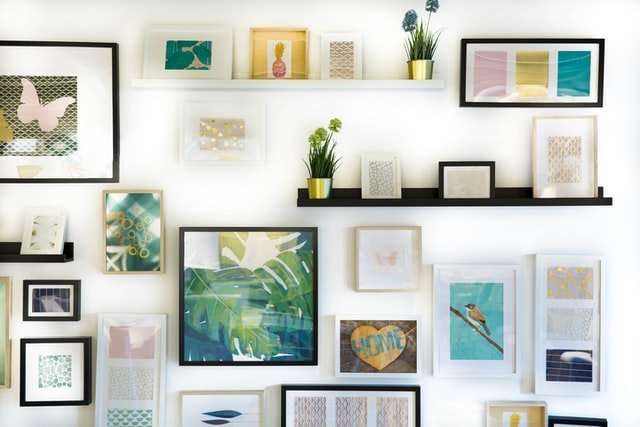Abstract art paintings are preferred by many people in today’s society. The majority of them have no idea how to buy original abstract art paintings. This is a guide that will help you understand the process of finding the best abstract art painting for your home or office.
Art is a very personal matter, and what one person likes another finds completely unattractive. However, there are certain types of abstract art paintings that seem to be universally popular.
Although the world of modern art can be intimidating if you do not know much about it or the artists who created them, there are some steps you can take to ensure that your abstract painting is unique, and in line with your tastes as well as any budget you might have.
Abstract art is most often thought of as a form of art that is totally devoid of all references to any real-world objects. It is also known as non-representational art, which basically means the same thing.
Yet abstract art may also be considered as representing something, though it may be difficult to pinpoint what exactly. The truth is that abstract paintings represent something, but the meaning is not always obvious.
Trying to understand abstract art can be a challenge for anyone who has never done so before, but this should not be an obstacle to viewing and enjoying these works of art. After all, people do not need to know science to appreciate Van Gogh’s Sunflowers or Monets Haystacks.
What are Abstract Art Paintings?
Abstract paintings are those that do not attempt to fully imitate reality, although some abstract artists do try to create images that at least partially look realistic. In general, however, such attempts are rare. Also, some abstract paintings use real-life objects with the help of broad and loose brush strokes that make them look like abstract paintings.
The main element of an abstract painting is the texture and color palette used by the painter in creating it. Some of the best abstract paintings have no recognizable forms at all, while
The abstract paintings presented on this blog are all original works of art created by the artists listed. The artists are all professional contemporary painters and sculptors who have exhibited their work in galleries, museums and art fairs throughout the United States and abroad.
Details of each original abstract painting can be viewed by clicking on the image representing the painting. Artist biographies, exhibition history and personal statements can be found within the artist’s personal profile page.
Abstract art is a style of painting that makes use of a visual language of shape, form, color and line to create a composition which may exist with a degree of independence from visual references in the world.
T he movement is traced to pre-World War I Europe (1910–1925), and the works of Wassily Kandinsky, Kazimir Malevich and Piet Mondrian.[1] It developed as an outgrowth of non-representational painting, and the abstract expressionism of the 1940s and 1950s.
T he term abstract art was first used in relation to painting in 1926.
The following are some tips to help you in the process.
Tip 1. Select a few artists to follow.
To get started, look through magazines and books and see if you find an artist or two that you like. If so, try to find out where they are showing their work and what galleries carry their work. In doing so, you will likely notice that many of the same galleries show the work of other artists that you also enjoy, again all in your price range. I suggest you select 3-5 artists to concentrate on as your focus and go from there, until you find one you really love who is not too expensive for your budget.
Tip 2: Find out what kind of art the artist makes.
The abstract genre can be very broad in terms of the styles an artist produces. Some abstract artists use only color fields with no brush marks, others include various textures and some even create representational forms within their abstractions. If texture is important to you and/or form is part of your visual vocabulary, it may be helpful for you to know if the artist uses these elements in their work before deciding whether or not to purchase from them.
If texture is important to you but an piece looks ‘too flat’ or ‘too slick’,
Abstract art is an artwork that uses a nonrepresentational style and lacks any literal or imitative symbolism. In the West, abstract art was also called avant-garde art.
The term abstraction was coined in the nineteenth century to describe works which exhibit a general freedom from visual references in their presentation. The “abstraction” movement can be traced back to 1863 when a group of artists formed The Associated Artists in an attempt to show their works without illusionistic or representational overlay. The styles which emerged from this movement were characterized by experimentations with form, color, and nontraditional media. These were the styles of Modernism and are not generally considered abstract.
Abstract art can be geometric, non-objective, or multicolored, which is often created with a brushstroke or finger painting technique. In addition to geometric abstraction and color field painting, other styles of abstract art include: Lyrical Abstraction; Hard-edge painting; Postminimalism; Geometric abstraction; De Stijl; Suprematism; Abstract Expressionism; Color Field painting; Action Painting; Minimalism; Kinetic Art; Op Art; and Postmodernism.
Tone: matter-of-fact

